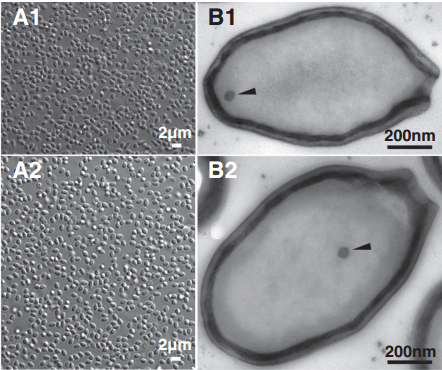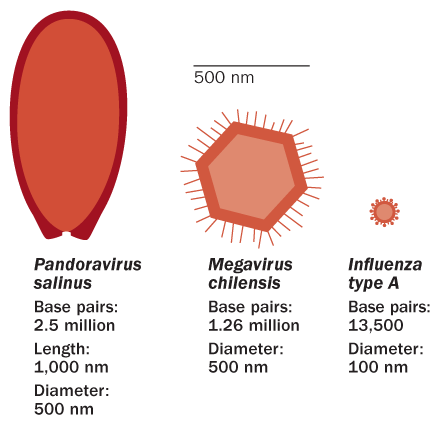Pandoraviruses - the Giants of the Microscopic
Behold the Pandoravirus salinus and Pandoravirus dulcis. They were discovered in 2013, and are the biggest viruses known to science, recovered in the mud of a pond in Australia and Chile's coastal waters.
Pandoraviruses infect sediment-dwelling Acanthamobae just as other giant viruses, such as the Mimivirus, which was initially wrongly described as a bacterium.
Viruses usually range between 50-100 nanometers in size, while pandoraviruses are close to 1 micrometer... that's 1000 nanometers, the typical size of parasitic bacteria! You can see them under a light microscope!
Aren't they bacteria, then?
Nope.
They are surrounded by a tegument-like envelope, they lack genes necessary for the coding
of capsid proteins, generating adenosine triphosphate (ATP), genes for protein translation, and binary fission (division in half,
a common way of reproduction in bacteria). All of this makes them total viruses.
These behemoths have a humongous DNA of more than 2,500 genes, 2,300 of which are totally new to science. Other viruses usually have up to 10. These guys' genome is greater than that of some parasitic eukaryotes. A great part of P. salinus's genome has been found to comprise of a great amount of DNA transposons which typically occur in prokaryotes and eukaryotes, but have rarely ever been reported in viruses.
Pandoraviruses have little in common with other viruses or with anything alive or dead. About 93% of their genes have not been found anywhere else in nature. This led scientists to a hypothesis, that pandoraviruses might be the key to a possible fourth domain of life, next to eukaryota, archaea and bacteria.
There is still a lot to discover on Earth, and especially in its micro-world. Bring it on, science!
Who's in this article?

Photo (source): Pandoravirus salinus (1),
P. dulcis (2), as seen under a light microscope (A) and electron microscope (B).
| Scientific name: | Pandoravirus salinus Pandoravirus dulcis |
| Baltimore classification: | Group I: dsDNA viruses |
| Order: | Megavirales |
| Family: | Pandoraviridae |
| Scientific reading: |
